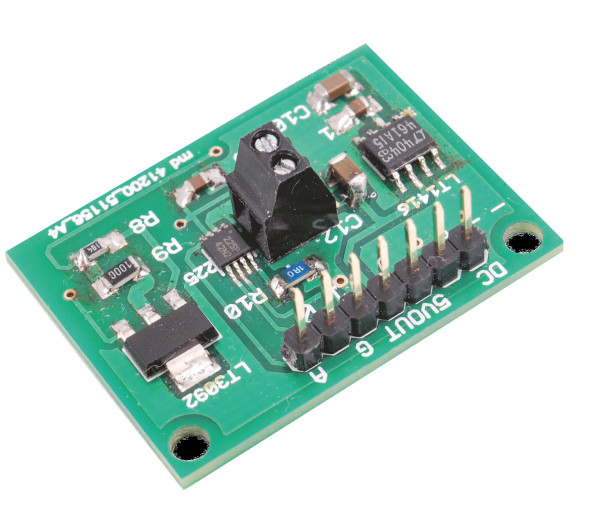This is an example of a simple and cheap milliohmmeter that can be made by every maker. The core of the circuit are a current source (LT3092) and a current sense (INA225): a costant current flows through the milliohm resistor under test and the voltage at the current sense output gives the value of the resistor (V=R*I).
The milliohmmeter can be used as a stand alone instrument by adding a MCU with at least 10 bit ADC and a LCD display or it can be used togheter with a DMM.
Current out from LT3092 can be set between 0.5 mA and 200 mA with 1% accuracy; INA225 gain can be set to 25, 50, 100 or 200 (0.3% accuracy). By setting Iout from current source equal to 10mA (Iout=10*R2/R3 uA) and current sense gain equal to 100, 1Ω = 1V and 1mΩ = 1mV as such the milliohm resistor value can be easily measured in mV using a DMM, without any kind of conversion. A voltage reference (LT1461) has been added to the circuit in order to have a precise and stable voltage, useful to power both the current source and the current sense as well as the the MCU and its ADC in case we want to have a stand alone milliohmmeter.
Following a simple example of code running on mbed freescale KL-25Z:
#include “mbed.h”Serial pc(USBTX, USBRX); // tx, rxfloat VADC=2.922; //ADC VOLTAGE REFERENCE (EQUAL TO V SUPPLY)//float IO=10.0; //COSTANT CURRENT//float GAIN=100.0; //INA225 GAIN//BOTH NOT REQUIRED IF SET LIKE THIS (1 Ω = 1 V)float RO=0.021; //RESISTANCE OF CONNECTING CABLES (COMPENSATION)float STAMPA_R = 0;AnalogIn resistor(A0); //CONNECTED TO INA225 OUTfloat ohm(){float R=0.0;float RADC=resistor.read();R = VADC*RADC-RO; //IF IO=10mA AND INA225 GAIN 100 -> (1 Ω = 1 V)wait_ms(100);return R;}int main(){while (1) {STAMPA_R= (ohm());pc.printf(“R = “);pc.printf(“%1.3f”,STAMPA_R); //R IN OHM WITH 3 DECIMALS (1mΩ OF RESOLUTION)pc.printf(“Ω”);pc.printf(“\r”);wait_ms(500);} |
For More Details: DIY milliohmmeter


